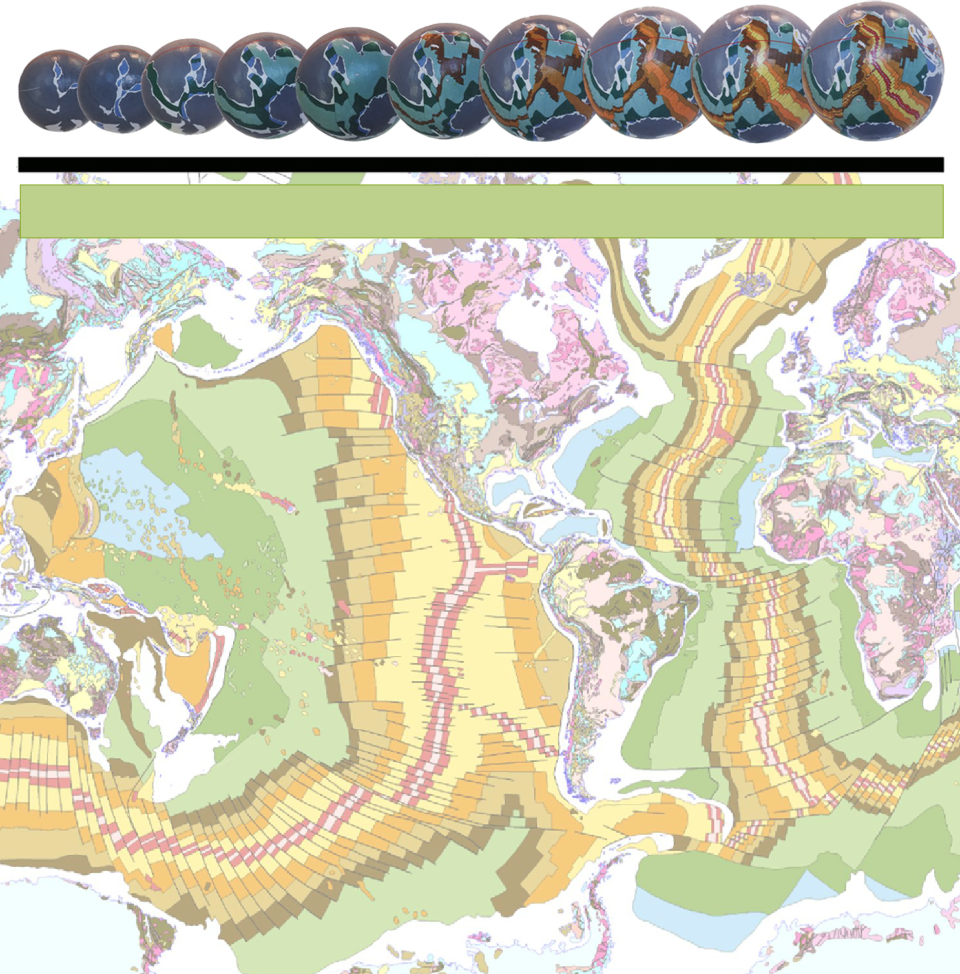

PANGAEA
The assemblage of a large Pangaea supercontinent was initially promoted by Alfred Wegener in 1915. In his proposal, he presented geologic evidence to suggest that the large continental areas of the modern world were originally united late in the Palaeozoic Era prior to subsequent breakup and dispersal of the continental fragments. This has since been adopted by plate tectonic studies, whereby Pangaea is said to have assembled from crustal fragments originating from the breakup of Gondwana.

Permian Pangaea Expansion Tectonic small Earth crustal assemblages. The model shows the ancient coastline distribution (blue lines) as well as the ancient Tethys, Iapetus, and Panthalassa Seas (blue shaded areas) forming part of a global network of continental seas. The figure also shows the locations of continental rupture commencing in the north and south Pacific and Arctic Ocean regions to form the modern oceans.
On plate tectonic models, during the late-
The presence of Pangaea on an Expansion Tectonic Earth represents a simple, progressive, although relatively rapidly changing evolution of the Gondwanan coastal outlines prior to continental breakup and formation of the modern continents. During this Pangaean time rupture and breakup of the continental crusts also initiated draining of the continental seas, which was in turn accompanied by a shift in where the eroded sediments were being deposited.
This shift in deposition changed from sediments being deposited within the existing network of continental sedimentary basins, to being deposited within newly opening marine basins and along the continental shelf margins of the newly formed continents. This influx of sediment, along with intrusion of new volcanic and magmatic rocks, is now commonly preserved within submerged marine plateaux and continental shelves surrounding most of the modern continents.
The post-
Changes were also accompanied by increased extinction of many of the established life forms as well as increased isolation of many species as a number of the modern continents separated to form island continents. The unique fauna of Australia, as well as the lack of unique fauna in India despite long isolation in plate tectonic constructions, are classic examples of this important event.
Following rupture of the supercontinental crust, Pangaea on an Expansion Tectonic Earth eventually broke-